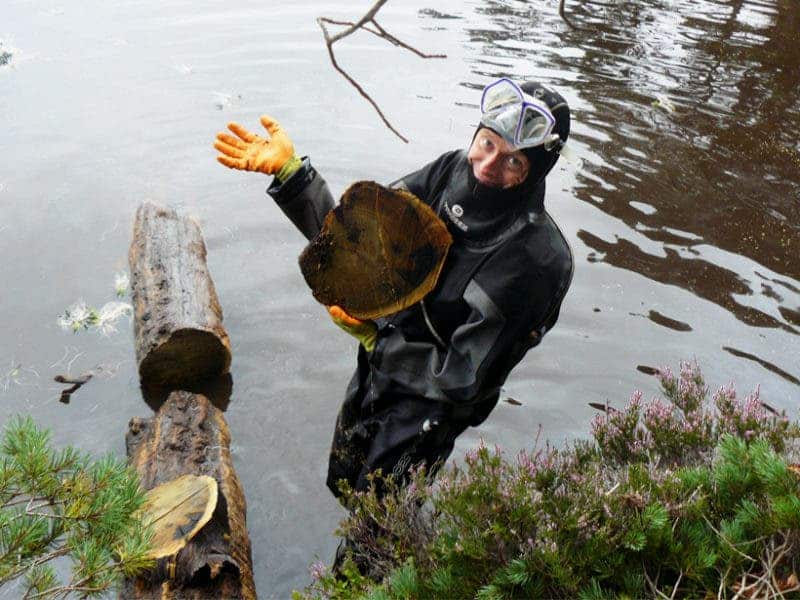
A period of extreme cold may have set the course for Scotland’s eventual union with England, which strengthened Scotland’s ability to withstand future climate adversities, reports an interdisciplinary team of climate scientists and historians.
Measurements from tree rings identified the 1690s as Scotland’s coldest decade in the past 750 years. Historical records from the same period provide vivid testimonies to the suffering endured by the Scots: crop failures, famines, deaths.
Although the unusual cold permeated much of the Northern Hemisphere, Scotland suffered disproportionately and lost 10%–15% of its entire population. “Scotland was a miserable place at that time,” said Robert Wilson, an Earth and environmental sciences professor at the University of St Andrews in Scotland and senior author on the study.
“We can speculate that perhaps the fact that Scotland was all alone in terms of being a country was one of the reasons why their conditions were much more vulnerable,” said Rosanne D’Arrigo, lead researcher on the study and associate director of the Division of Biology and Paleo Environment at the Lamont-Doherty Earth Observatory of Columbia University in Palisades, N.Y.
Indeed, following the crisis, Scotland entered into Acts of Union with England, a political partnership that allowed Scotland to avoid suffering further famine-related catastrophes during subsequent climate swings.
The results of the study, recently published in the Journal of Volcanology and Geothermal Research, paint a picture of the complex interactions between climate change and the trajectory of Scotland’s economic and political history.
A Jigsaw of Tree Rings and Historical Documents
Every August for the past 10 years, Wilson and his team would go hunt for trees at the bottom of Scottish lakes. The ancient wood, buried in lake sediment, can be millennia old and preserved well enough to provide clues to the region’s climate in years past.
The growth of new tree rings is well coupled with the summer temperature, the trees’ growing season, Wilson said. If temperatures are warm, the rings are generally wider and denser; in colder temperatures, the converse is true. Climate researchers can use these tree ring measurements to extract a climate signal for each summer a tree was alive and growing.
The unique property of dendrochronology, this technique of using tree ring measurements to date and interpret past events, “is that there’s no error in the data if you do it right,” D’Arrigo said.
Piecing together samples from long-dead remnant (subfossil) trees in lakes with samples nondestructively collected from living trees (typically only a few hundred years old), the researchers reconstructed and stitched together a temperature timeline for Scotland. “It’s like a jigsaw,” Wilson said. “A jigsaw that’s fairly complete for the last millennium.”
Patrick Klinger, a historian from the University of Kansas, helped uncover historical documents that corroborated the tree ring data, a process that he said was “more often than not, stumbling upon [the documents] in the archives.”
Klinger noticed that in the 1690s, people started recording more and more cold climate conditions in Scotland. “Especially by 1698, it’s amazing how many more records you have during that year talking about the conditions and basically how awful and how different they are,” he said.
The dire climate conditions of the 1690s helped motivate a daring scheme to improve Scotland’s economic standing and independence: colonize the Darién region in what is now Panama.
A litany of misfortunes—disease, famine, mismanagement, and Spanish attacks—befell the Scottish colonists in Panama, and the Darien Scheme ultimately collapsed.
“Between 15 to upwards of about 40% of all the actual capital in Scotland was invested in this project,” said Klinger. The colony’s failure left Scotland in an even worse economic situation and helped trigger the Acts of Union with England.
“This is a nice piece of interdisciplinary work on a regional scale linking historical evidence with paleoclimate natural information,” said Jürg Luterbacher, director of the Science and Innovation Department at the World Meteorological Organization.
There are several possible causes for the cooling, the primary one identified in the new paper being volcanic activity, which creates particles in the atmosphere that reflect solar heat. However, said Luterbacher, there are other alternatives. “You can have a solar minimum, you have land use changes, it can be natural variability, [or] just because maybe the ocean or the circulation changed.”
“The Brexit Paper”
This story detailing how British nations derived strength from unity dovetails with the current political movement calling for the United Kingdom to leave the European Union.
“I always call this the Brexit paper because we started writing it after the first Brexit vote,” Wilson said. “We just felt that there was this story that had relevance from 300 years ago to today.”
“You’re not going to get the help if you haven’t been part of the team. And that’s the cautionary tale at the end of this,” he added.
—Richard J. Sima ([email protected]; @richardsima), Science Writer
This article was originally published AGU’s EoS Magazine and has been re-published here under a CC BY-NC-ND 3.0 license.






